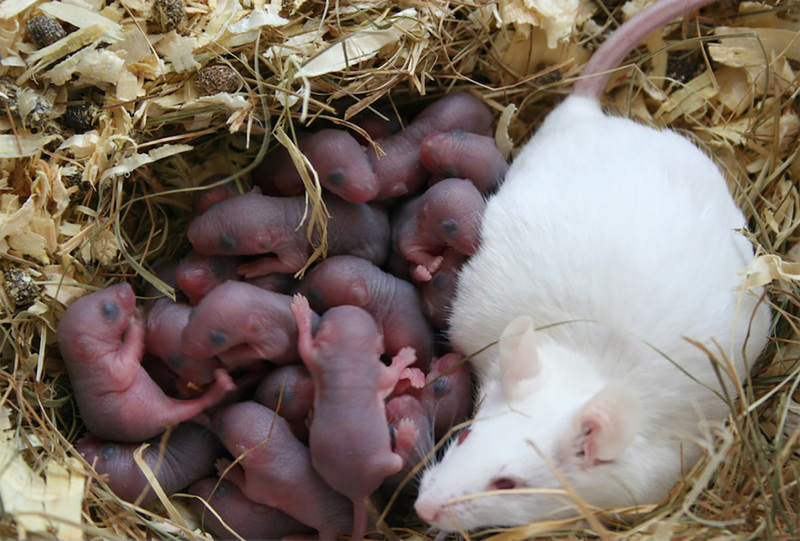
Can two women have children?

- Related Topics:
- Futuristic science,
- Reproduction,
- LGBTQ+
Anonymous asks:
“I read someplace that scientists made a mouse with two moms and no dad. Does this mean that two women can have children now?”
No. At least right now, two women can’t have a baby together without a sperm donor. The method used to create those mice with two moms isn’t something that can be done in humans. Let’s look at why it worked for these mice but wouldn’t work for people.
In most animals, babies are made from sperm from the father and an egg from the mother. The sperm and egg each give half of the chromosomes or DNA to the embryo. (The mother’s egg also gives the rest of cellular machinery the embryo needs to develop into a baby.)
The DNA inherited from the father and the DNA inherited from the mother is very similar. However, when scientists compared sperm and egg DNA they discovered that some part of the DNA is altered in certain places in the sperm and other places in the egg. This is called imprinting. Because of this difference sperm and egg DNA behave differently. This makes it necessary that embryos are made from a mother’s egg and a father’s sperm.
So how did scientists get around this problem with the mice? Two ways. First, they made a mutant female mouse whose DNA looked more male than female. Second, they used DNA from eggs of very young mutant mice. At such an early age the male and female DNA differences are not so extreme as in adult eggs. The process is still very hard to do; scientists were able to create only two babies that survived to adulthood. This took lots of tries: 457 to be exact!1
This experiment could not be done in human beings since we cannot make mutant women whose DNA looks more like a man’s. This would require physically altering a person’s genes, which we cannot do in human beings right now. Even if we could, that raises a lot of ethical questions of whether we should change a person’s DNA like this. And without this mutation, it is necessary for one parent to be a male and the other to be a female.

There are, however, animals out there that can naturally make babies without needing a mom and a dad. These animals include lizards, certain fish, even turkeys! This type of reproduction is also seen in some plants. Scientists call this behavior parthenogenesis.
So, no, it currently isn’t possible for two women to have a baby together. Maybe this could be possible sometime in the future, but it would require scientists to figure out entirely new strategies and methods.

Author: Eszter Vladar
When this answer was published in 2023, Christy was a Ph.D. candidate in the Department of Chemicals and System Biology, studying the mechanisms of random monoallelic expression in Howard Chang’s and Joanna Wysocka’s laboratories. Christy wrote this answer while participating in the Stanford at The Tech program.
 Skip Navigation
Skip Navigation
